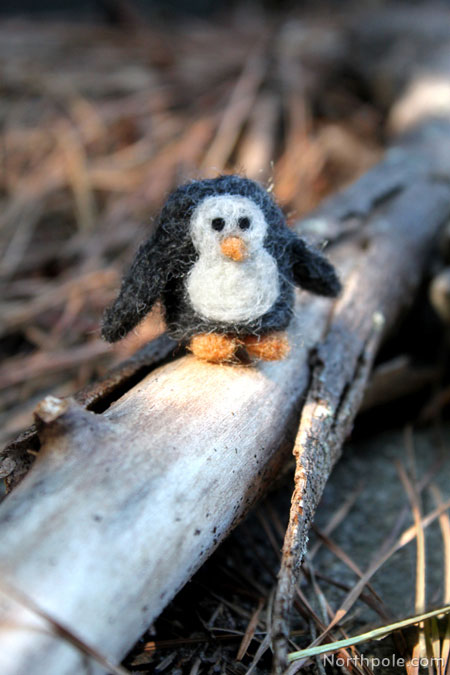Skill Level:
Crafting Time:
Technique(s):
Material(s):
Category:
Tag(s):
Share This Craft
Search Crafts
Needle Felted Penguin Pals
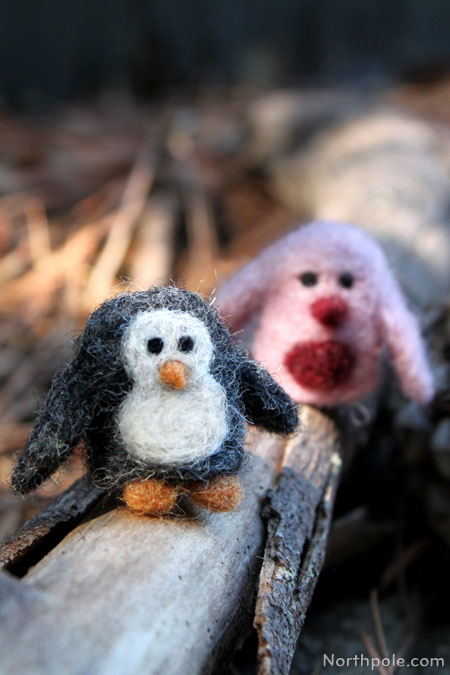
Needle felting is a relaxing hobby that can produce rather adorable results, such as wee wooly characters! This tutorial will show you how to make a little bitty penguin, but you can apply these same techniques to make whatever felted figurine your heart desires. If you are new to needle felting, be sure to read this Needle Felting 101 article before getting started.
Supplies & Tools:
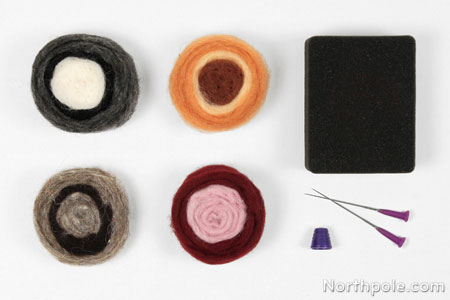
- Wool roving, assorted colors
- Felting needles
- Piece of foam (or felting mat)
- Thimble
Directions:
Make the Body:
- Set foam (or needle felting mat) on work surface. If you’re working on your nice dining table, you may want to protect the table with a cutting mat or cardboard, as you might poke the needle through the foam.
- Pull an 8" x 2" tuft of roving from the skein. There’s no need to cut the roving; simply pull the fibers in the same way that you would pull off a piece of cotton candy.
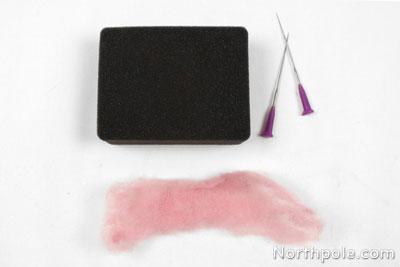
- Tightly roll the roving to make a gumdrop shape that is about 1.5" long. As you roll, fold the roving as necessary. This will be the body of your penguin.

- Working over the foam, begin poking the roving with your felting needle, being careful not to poke your fingers. First secure the loose fibers down, and then lightly poke around the cylinder, which will become the body.
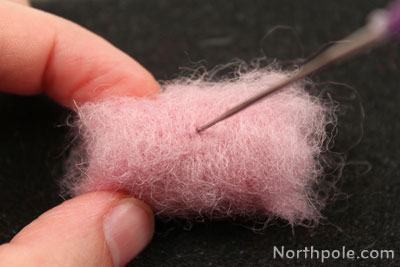
- Concentrating on the bottom of the body, poke it to give it a flat surface.
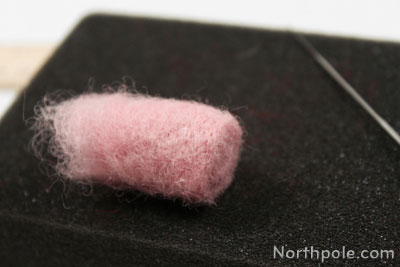
- Then, concentrating on the top of the body, poke it to give it a tapered, round shape.
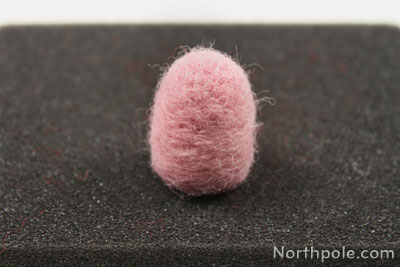
- Now you’re done with the forming the body; set aside as you make the wings.
Make the Wings:
- Pull a very small tuft of roving that is roughly 1" in diameter.
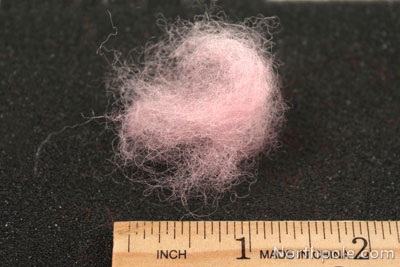
- Fold the roving over to roughly make the shape of a wing. Protect your finger with thimble and begin poking the roving to form the wing.
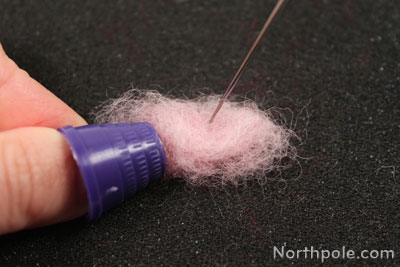
- Continue poking the wing, making one end into a pointed tip, leaving the other end unfinished. These loose fibers are for attaching the wing to the body.
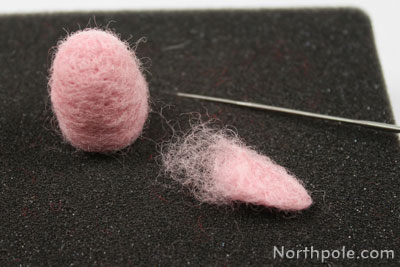
- Repeat steps to make the other wing.
Assemble Penguin and Add Final Details:
- Attach wings, one at a time, to the body. Poke all the loose fibers into the body for a seamless finish. Be mindful of how you hold the penguin so that you don’t poke your fingers. Use the thimble for protection, if necessary.
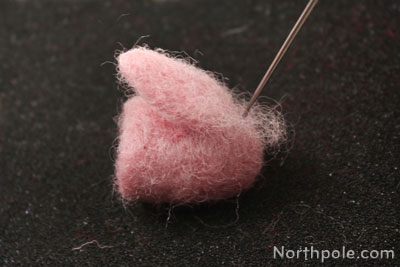
- To make the tummy, add a little bit of roving in a contrasting color to the body. Use needle to poke it in place. Make sure the penguin is lying on the foam with the tummy facing up. You want to make sure you are poking the needle into the foam.
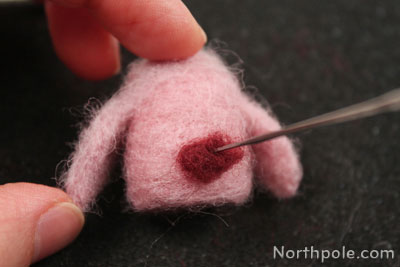
- Take a little bit of roving in a contrasting color and poke it to make a small beak. This is a little challenging since the beak is so small, so try rolling the roving between your fingers to help get the shape started, and then poke it to make the beak denser. Leave one end of the beak unfinished so that you can attach the beak to the body.
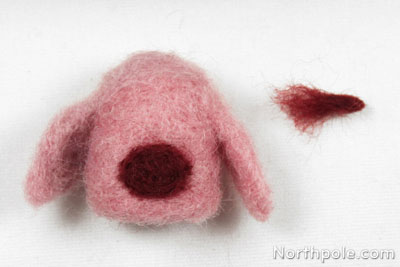
- Place the beak on the penguin and begin felting it on. As you attach it, poke around the beak, not in the center, as you don’t want to flatten it. You may need to poke at an angle to secure all the loose fibers, but be very careful that you don’t poke your fingers!
Note: When poking at an angle, make sure you insert/remove the needle at the same angle. If you pull the needle out at a different angle than how you inserted it, you could break your needle.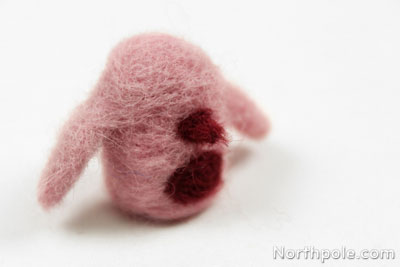
- For the eyes, take just a few fibers of roving and roll between your fingers to make a ball.
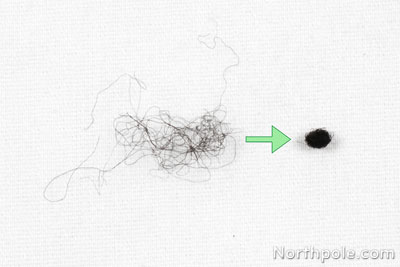
- Attach eyes to the penguin’s face with your felting needle.
Note: If you notice that one eye is bigger than the other, just keep poking the eye around the edges until it is the same size as the other.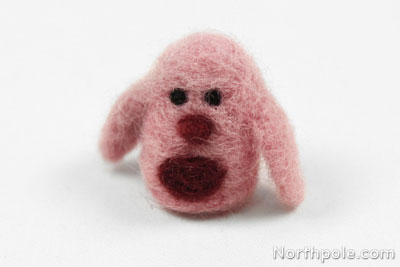
- If you want to give your penguin feet, you can use the same technique that you used to add the wings.
- Your adorable penguin is finished. Now make a friend for her!
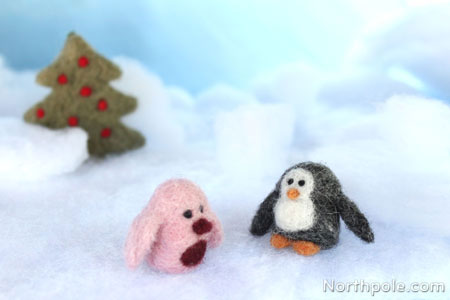
Elfy Hint:
- As you poke your project, occasionally lift it off the foam. This will help prevent your roving from sticking to the foam. If your project does get stuck to the foam, gently pull it up. Occasionally moving your project around also helps prevent little foam bits from getting stuck in your project. Sometimes tiny bits of foam can get stuck in your project if you’ve been poking in the same spot for too long. For more tips on needle felting, click here.
